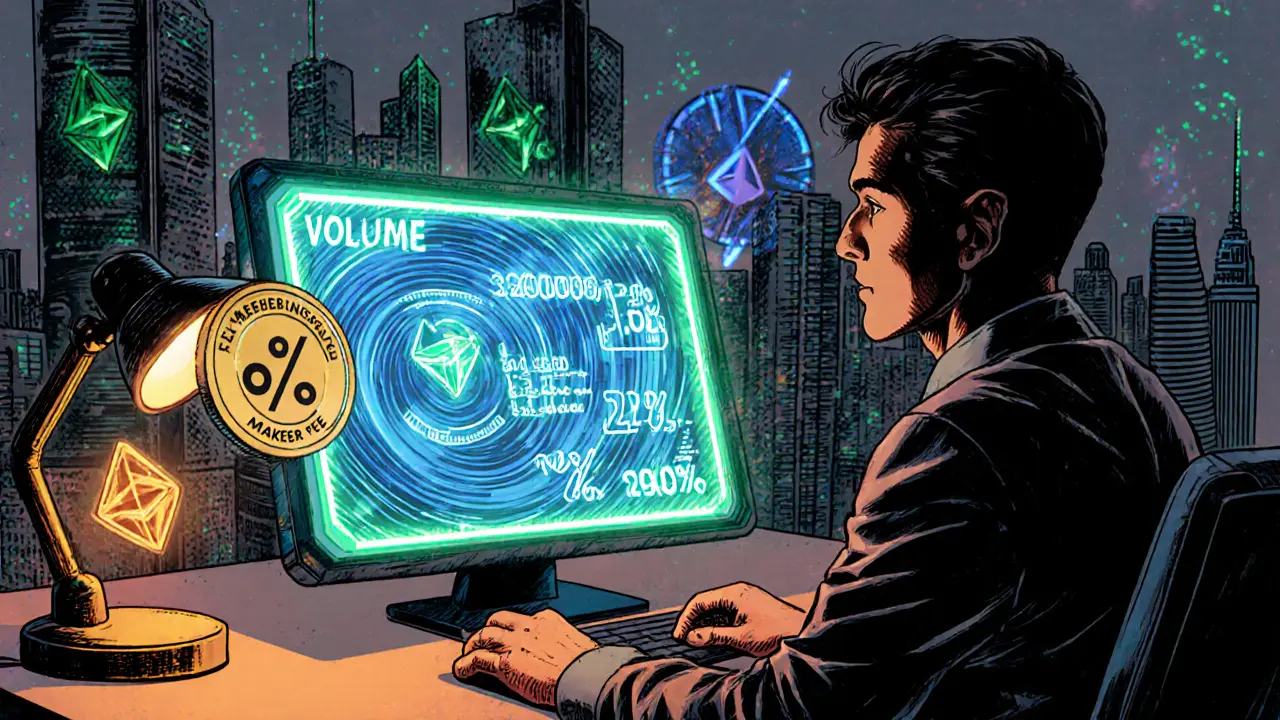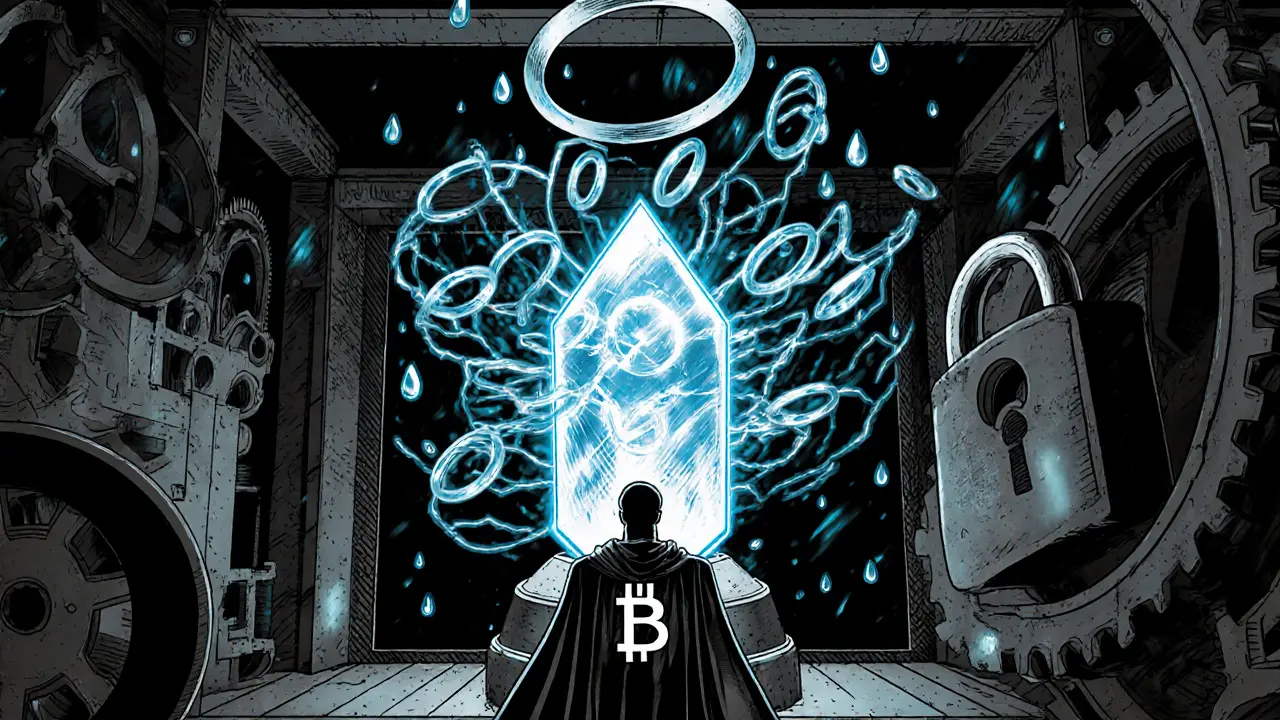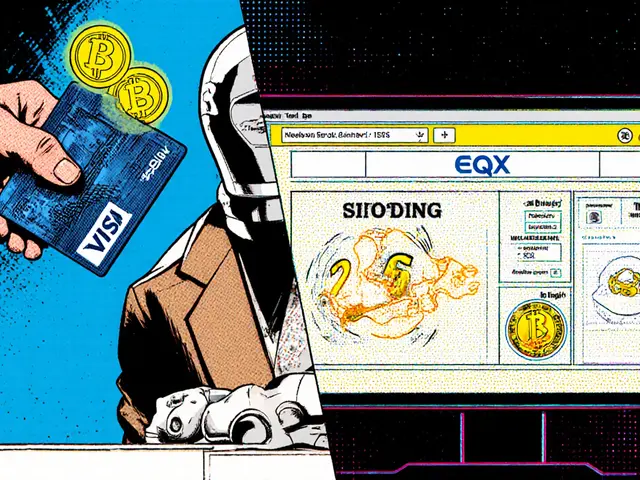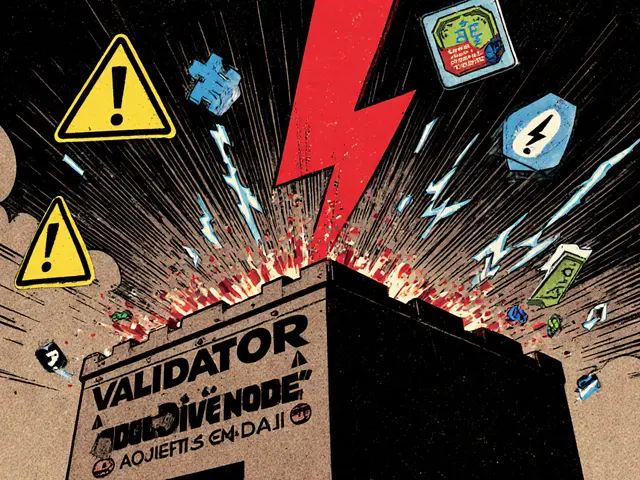
Loopring DEX Fee Calculator
Estimate Your Trading Costs
Enter your expected monthly trading volume to see potential savings with Loopring's low fees.
Estimated Monthly Costs Comparison
Enter values and click "Calculate Estimated Fees" to see results.
Fee Structure Overview
| Exchange | Maker Fee | Taker Fee | ETH Withdrawal Fee |
|---|---|---|---|
| Loopring | 0% | 0.10% | 0.002 ETH |
| Uniswap v3 | 0% | 0.30% | 0.0006 ETH |
| Joyso | 0% | 0.20% | 0.0006 ETH |
Quick Takeaways
- Zero‑fee maker orders and 0.10% taker fee make trading cheap.
- zkRollup tech gives Ethereum‑level security with sub‑second settlement.
- Withdrawal costs (0.002ETH) are higher than many DEX rivals.
- Only Ethereum‑based assets are supported - no BTC or BSC tokens.
- Community praises low fees and speed; newcomers struggle with order‑book UI.
Loopring Exchange is a decentralized exchange (DEX) protocol and Layer‑2 scaling solution built on Ethereum. Launched after a 2017 ICO, the platform aims to let traders move assets directly from their wallets while avoiding the high gas fees that plague Ethereum’s mainnet. In 2025 the protocol runs on zkRollup technology, which bundles thousands of transactions into a single proof that is settled on‑chain, keeping security intact but slashing costs.
How Loopring Works Under the Hood
At its core, Loopring combines three pillars: a non‑custodial order‑book, zero‑knowledge rollups, and a native utility token, LRC token. Unlike automated‑market‑maker (AMM) DEXs, Loopring’s order book matches buy and sell orders off‑chain. Once a match is found, the protocol creates a “ring” that can contain up to 16 trades and settles them atomically.
The heavy lifting is done by zkRollup (zero‑knowledge rollup). The rollup aggregates a batch of trades, generates a succinct cryptographic proof, and writes only that proof to Ethereum. This approach reduces on‑chain data to a few bytes, cutting gas from $20‑$30 per trade to a few cents. Users still retain full control of their private keys, so the platform is truly non‑custodial.
When you place a maker order, you pay maker fee of 0% - Loopring doesn’t charge for order creation. When your order is hit, you become a taker and pay a flat 0.10% taker fee. These fees are taken in the token you trade, not in LRC. LRC’s role is governance and staking; users can lock LRC to earn a share of the protocol’s fee revenue.
Fee Structure Compared to Other DEXs
Loopring’s low fees are its headline advantage, but the withdrawal cost can bite small traders. Below is a snapshot of how Loopring stacks up against popular peers as of October2025.
| Exchange | Maker Fee | Taker Fee | ETH Withdrawal Fee |
|---|---|---|---|
| Loopring | 0% | 0.10% | 0.002ETH |
| Uniswap (v3) | 0% | 0.30% | 0.0006ETH |
| Joyso | 0% | 0.20% | 0.0006ETH |
| Bilaxy | 0% | 0.20% | 0.01ETH |
| EtherDelta (legacy) | 0% | 0.25% | 0.0007ETH |
Loopring’s taker fee is roughly half the industry average, and the zero‑fee maker model encourages liquidity provision. The withdrawal fee, however, is the second‑highest among the listed DEXs - a factor to watch if you move small amounts frequently.
Pros and Cons - What You Need to Know
Pros
- Low trading fees: 0% maker, 0.10% taker.
- Fast settlement: zkRollup batches enable sub‑second finality.
- Full security: Trades settle on Ethereum, no custodial risk.
- Order‑book pricing: Better price discovery than typical AMMs.
- Interoperability: Native support for ERC‑20, ERC‑721, and ERC‑1155 tokens.
Cons
- Higher ETH withdrawal fee (0.002ETH) discourages tiny withdrawals.
- Asset scope limited to Ethereum ecosystem - no Bitcoin, Binance Smart Chain, or Solana tokens.
- Learning curve: order‑book UI is less intuitive for users accustomed to Uniswap‑style swaps.
- Liquidity depth can be thin on less‑traded pairs compared to big AMMs.

Security Model and Asset Coverage
Because Loopring never holds user funds, security hinges on two things: the underlying Ethereum network and the correctness of the zkRollup proofs. The zero‑knowledge proofs are publicly auditable; anyone can verify that the batched transactions are valid without seeing the individual details. This design eliminates the typical “hot‑wallet” hack vector seen on centralized exchanges.
The platform only supports Ethereum‑compatible tokens - any ERC‑20, ERC‑721, or ERC‑1155 asset can be traded. While this focus guarantees deep integration with DeFi protocols (e.g., Aave, Compound), it also means you can’t directly trade BTC, SOL, or LUNA on Loopring. Users who need cross‑chain exposure must bridge assets to an ERC‑20 wrapper first.
User Experience - What Real Traders Say
Community sentiment is split along experience levels. Veteran DeFi users appreciate the sub‑cent gas fees and the ability to keep assets on‑chain. They also like the governance opportunity: staking LRC grants voting rights on protocol upgrades.
Newcomers often stumble on the order‑book layout. Unlike the one‑click “swap” on Uniswap, Loopring requires you to set price, amount, and order type (limit, market, or stop‑limit). Tutorials exist, but many users report that the documentation feels technical - concepts like “ring orders” and “off‑chain matching” aren’t simple for first‑time traders.
Withdrawal fees surface in complaints when users try to move small amounts (<0.1ETH). Some community members recommend batching withdrawals or using Layer‑2 bridges to reduce costs. Overall, the platform scores high on speed and fee efficiency, but usability remains a barrier to mass adoption.
Future Outlook - Where Loopring Could Go
Analysts see Loopring as a linchpin in the Layer‑2 ecosystem. Its dual role as a DEX and scaling solution gives it a unique market niche. Forecasts for the LRC token range wildly - some models predict sub‑$0.10 price, while bullish scenarios push it towards $0.50 by late 2025. The spread reflects uncertainty around Ethereum’s fee environment and competition from newer zkRollup projects like StarkNet and zkSync.
Key growth levers include:
- Expanding asset support - adding bridged Bitcoin or Polygon tokens would broaden the user base.
- Improving UI/UX - a hybrid “swap‑plus‑order‑book” could lower the entry barrier.
- Lowering withdrawal fees - a tiered fee model or LRC‑staking discount could make small withdrawals viable.
- Strategic partnerships - deeper integration with DeFi lending platforms could boost trading volume.
If Loopring can address these areas while keeping its low‑fee, high‑throughput advantage, it could solidify its place as a go‑to DEX for serious Ethereum traders.
Bottom Line
For anyone who trades ERC‑20 tokens and cares about keeping fees under control, Loopring offers a compelling package. The Loopring Exchange review shows that its zkRollup engine delivers speed and security, while the zero‑fee maker model fuels liquidity. The main trade‑off is the relatively steep ETH withdrawal cost and a steeper learning curve compared to AMM‑only platforms. If you’re comfortable navigating an order‑book and can batch withdrawals, Loopring can save you money and give you a glimpse of next‑gen DeFi infrastructure.
Frequently Asked Questions
What is the main advantage of Loopring over Uniswap?
Loopring’s order‑book model produces tighter spreads and zero‑fee maker orders, while its zkRollup layer reduces gas fees to a few cents per trade. Uniswap relies on AMM pricing, which can be less efficient for large orders.
How do I withdraw funds from Loopring?
Open the Loopring wallet, select the asset, and click “Withdraw”. You’ll pay a fixed 0.002ETH network fee. To minimize cost, consider bundling multiple withdrawals or moving funds to a Layer‑2 bridge before exiting.
Is Loopring safe for storing my crypto?
Yes, because it’s non‑custodial. Your private keys stay in your wallet, and transactions settle on Ethereum via zkRollup proofs that are publicly verifiable.
Can I trade Bitcoin on Loopring?
Direct BTC trading isn’t supported. You would need to wrap Bitcoin as an ERC‑20 token (e.g., wBTC) before trading on Loopring.
What role does LRC play in the ecosystem?
LRC is the governance token. Holders can stake LRC to earn a share of the protocol’s fees and vote on upgrades, fee structures, and new features.
How does Loopring’s order‑book differ from traditional exchanges?
Loopring matches orders off‑chain and settles them in batches via zkRollups. Traditional DEXs like Uniswap use on‑chain AMM pools, while centralized exchanges keep order books on their servers.






There are 7 Comments
Natasha Nelson
Sam Kessler
Steve Roberts
John Dixon
Brody Dixon
Mike Kimberly
angela sastre
Write a comment
Your email address will not be published. Required fields are marked *